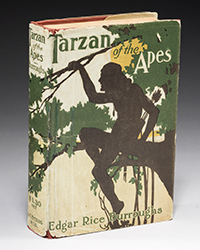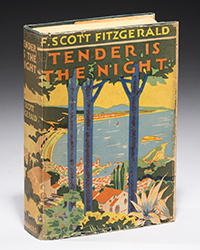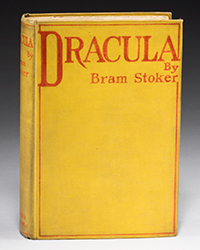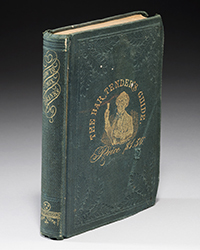Rare Book Monthly
Slavery in the United States <br> Chapter 9
"Slaves emancipated by their masters are directed to leave the state within twelve months from the date of their emancipation.
"These laws, and every other having the appearance of rigour towards the slave, are nearly dead letters upon our statute book, unless during times of excitement, or since the efforts of the abolitionists have reanimated them. I have, until lately, scarcely known an instance in which they have been enforced.
"It is equally rare to witness the trial of a slave for any except very serious crimes. There are many offences committed by them, for which a freeman would be sent to the penitentiary, that are not noticed at all, or punished by a few stripes under the directions of the master. "When tried for a crime, it is before a court of at least five magistrates, who must be unanimous to convict. They are not entitled to a trial by jury, but it is acknowledged on all hands that this is a benefit, and not a disadvantage. The magistrates are more respectable than common jurors, and, being generally slave-holders themselves, they feel a certain sympathy with the prisoner, or, at all events, an absence of that prejudice to which common jurors are very subject.
"Slaves may be taught, and many of them are taught, in their owner's family. They are allowed to attend religious worship conducted by white ministers, and to receive from them religious instruction. In point of fact, they go where they please on Sundays, and at all other times when they are not engaged in labour.
"2. 'The rights and duties of slaves,' as a distinct class, are not defined by law. They depend upon usage or custom, which controls the will of the master. Thus, the law does not recognize their right to hold property, but no instance is known of the master's interfering with their little acquisitions; and it often happens, that they are considerable enough to purchase themselves and family. In such cases I have never known the master to exact from the slave the full price that he might have obtained from others. In the same manner, the quantity and quality of food and clothing, the hours of labour and rest, the holydays, the privileges, &c. of the slave, are regulated by custom, to depart materially from which would disgrace the master in public opinion.
"3. 'The domestic relations of the master and slave.' On this subject the grossest misrepresentations have been made. It seems to be imagined at the North that our society is divided horizontally. All above the line, tyrants—all below it, trembling, crouching slaves. Nothing can be more unlike the real picture. The intercourse between the master and slave is kind, respectful, and approaching to intimacy. It must be recollected, that they have been brought up together, and often form attachments that are never broken. The servants about the house are treated rather as humble friends than otherwise. Those employed differently have less intercourse with the white family; but, when they meet, there is a civil, and often cordial greeting on both sides. The slaves generally look upon their masters and mistresses as their protectors and friends. They seldom, I am persuaded, think of the injustice or cruelty of being held in bondage, unless they have tasted of the tree of knowledge to which they are invited by some Satanic abolitionist. Born slaves, and familiarized with their condition, they have no wish to change it when left to themselves. When they compare it with that of the poor labouring whites in their own neighbourhood, no envy is excited, but an opposite sentiment. The slave of a gentleman universally considers himself a superior being to 'poor white folks.' They take pride in their master's prosperity; identify his interests with their own; frequently assume his name, and even his title, and speak of his farm, his crops, and other possessions, as their own; and well, indeed, may they employ this language, for they know that the greater part of the profits is liberally devoted to their use.
"In their nature the slaves are generally affectionate, and particularly so to the children of the family, which lays the foundation of the attachments I have spoken of, continuing through life. The children are always favourites, and the feeling is reciprocated. It is a great mistake to suppose that the children are permitted to tyrannise over the slaves, young or old, and that they learn in this way domineering habits. Some may, but more frequently there is rather too much familiarity between the white females and children of a family, and the slaves of the same description. The children play together on terms of great equality, and if the white child gives a blow, he is apt to have it returned with interest. At many tables you will find the white children rising from them, with their little hands full of the best of every thing, to carry to their nurses or playmates; and I have often known them to deny themselves for the sake of their favourites. These propensities are encouraged, and every thing like violence or tyranny strictly prohibited. The consequence is, that when the young master (or mistress) is installed into his full rights of property, he finds around him no alien hirelings, ready to quit his service upon the slightest provocation, but attached and faithful friends, known to him from his infancy, and willing to share his fortunes, wherever they may carry him. The connexion is more that of the Scottish clansman than of the English serf in times past, and it influences all their future intercourse. The old gray-headed servants are addressed by almost every member of the white family as uncles or aunts. The others are treated with at least as much respectful familiarity as if they were white labourers, and I should say with more. Fully aware of their standing and consequence, they never hesitate to apply to their masters and mistresses in every difficulty. If they have any want, they expect to be relieved—if they are maltreated, they ask redress at their hands. Seldom or never are appeals of this kind made in vain. Injury to the slave from any quarter is regarded as an injury to the master. On no subject is a Virginian more sensitive; for he considers himself bound, by every moral obligation, to protect and defend his slave. If he is carried before a justice for any offence, the master accompanies him; if he is arraigned before the courts, the master employs counsel, and does every thing in his power to see that he has justice. In fact, the disposition is to screen the slave by every possible means, even when his guilt is apparent, and I have known this carried to very unjustifiable lengths. In short, as far as my observation has extended, and I have been in free as well as slave states, I do not hesitate to affirm, that the domestic relations of the master and slave are of a more familiar, confidential, and even respectful character, than those of the employer and hireling elsewhere.
"4. 'The usual duration of the labour of the slave' is from sunrise to sunset, with the exception of about one hour and a half allowed for breakfast, and from 12 to 2 o'clock for dinner. In harvest-time they get out somewhat earlier. But any extraordinary diligence during this period is more than made up by their being allowed, at its termination, a few days to labour for themselves, or for others who have not finished, and from whom they receive wages. The women in this part of the state do very little field-work. They are engaged in spinning, cooking for the out-hands, and taking care of the children. Few women are worth their victuals and clothes. Their labours are very light and profitless. A white labouring 'woman will do double as much.
"5. 'The liberty usually allowed him, his holy-days and amusements, the manner in which they usually pass their evenings and holydays.' Under these heads may be classed various privileges enjoyed by the slave. When he is not at work he is under no restriction or surveillance. He goes where he pleases, seldom taking the trouble to ask for a pass; and if he is on the farm at the appointed hours, no inquiry is made how he has employed the interval. The regular holydays are two at Easter, two at Whitsuntide, and a week at Christmas. These he enjoys by prescription, and others, such as Saturday evenings, by the indulgence of his master. He passes them in any way he pleases. Generally they are spent in visiting from house to house, and in various amusements. His favourite one, if he can raise a violin, is dancing. But this, unfortunately, is going out of fashion, both with whites and blacks, and no good substitute has been found for it. They however assemble at their cabins to laugh, chat, sing, and tell stories, with all imaginable glee. To see them under these circumstances, you would never suppose they were groaning under oppression, or brooding over melancholy thoughts. It would grieve an abolitionist to hear their free and joyous peals of laughter, and their light-hearted conversation. No present care seems to annoy, no anticipated sorrow to deject them, but they surrender themselves fully and entirely to the enjoyment of the passing moments. They know that, under all circumstances, their masters must provide for them. Of course they have no anxiety about their families, or the failure of crops, or the course of the seasons, or the horrors of debt, or any other of the many circumstances which imbitter the life of the freeman, and render sad or thoughtful the gayest disposition. Hence they appear to be, and they are proverbially, the merriest people in the world; and it seems cruel to awake them from their dream of happiness, to tantalize them with prospects that can never be realized.
"Other of the slaves who are more provident employ a portion of their holydays and evenings in working for themselves. Each head of a family, or married man or woman, has a cabin allotted for his or her accommodation. These cabins are usually made of logs, chinked and plastered, with plank or dirt floors. Some proprietors build them of brick or stone, or framed wood, but I do not believe the slaves generally prefer them. They like the large, open fireplace of the cabin, where a dozen or more can sit round the blazing hearth, filled with as much wood as would supply a patent stove for ten days. Stoves they abominate, and small Rumfordized fireplaces. Near their cabins they have ground allotted for their garden and patch of corn. In their gardens they have every vegetable they choose to cultivate, besides raising pumpkins, broom-corn, &c, in their masters' cornfields.




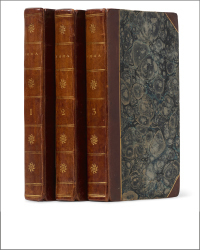
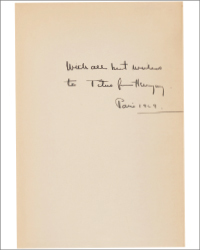

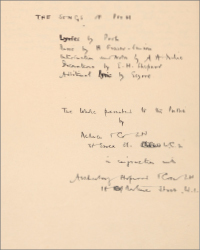

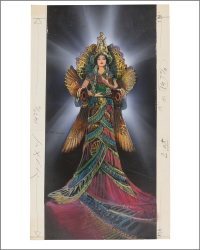

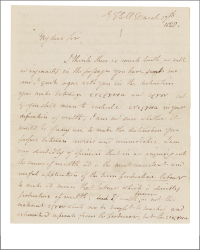
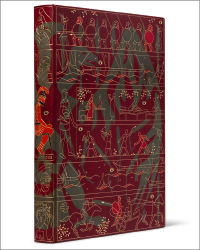
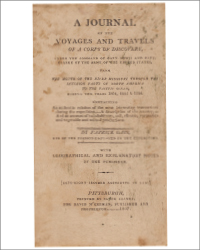


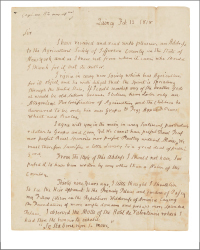

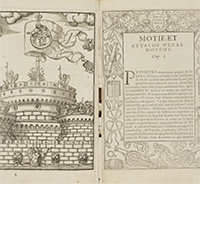
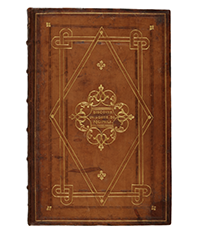
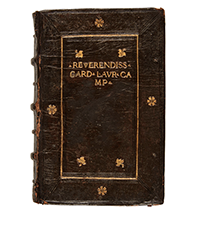
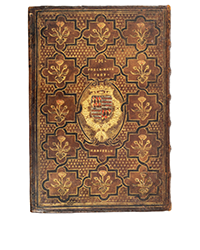

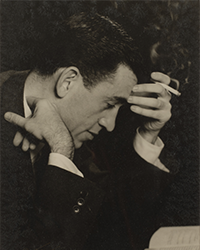
![<b>Sotheby’s, Dec. 16:</b> [Austen, Jane]. A handsome first edition of <i>Sense and Sensibility,</i> the author's first novel. $60,000 to $80,000. <b>Sotheby’s, Dec. 16:</b> [Austen, Jane]. A handsome first edition of <i>Sense and Sensibility,</i> the author's first novel. $60,000 to $80,000.](https://ae-files.s3.amazonaws.com/AdvertisementPhotos/9a74d9ff-42dd-46a1-8bb2-b636c4cec796.png)
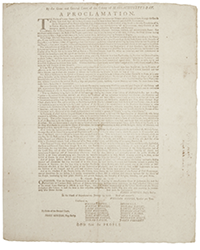

![<b>Heritage, Dec. 15:</b> John Donne. <i>Poems, By J. D. With Elegies on the Author's Death.</i> London: M[iles]. F[lesher]. for John Marriot, 1633. <b>Heritage, Dec. 15:</b> John Donne. <i>Poems, By J. D. With Elegies on the Author's Death.</i> London: M[iles]. F[lesher]. for John Marriot, 1633.](https://ae-files.s3.amazonaws.com/AdvertisementPhotos/8caddaea-4c1f-47a7-9455-62f53af36e3f.jpg)
